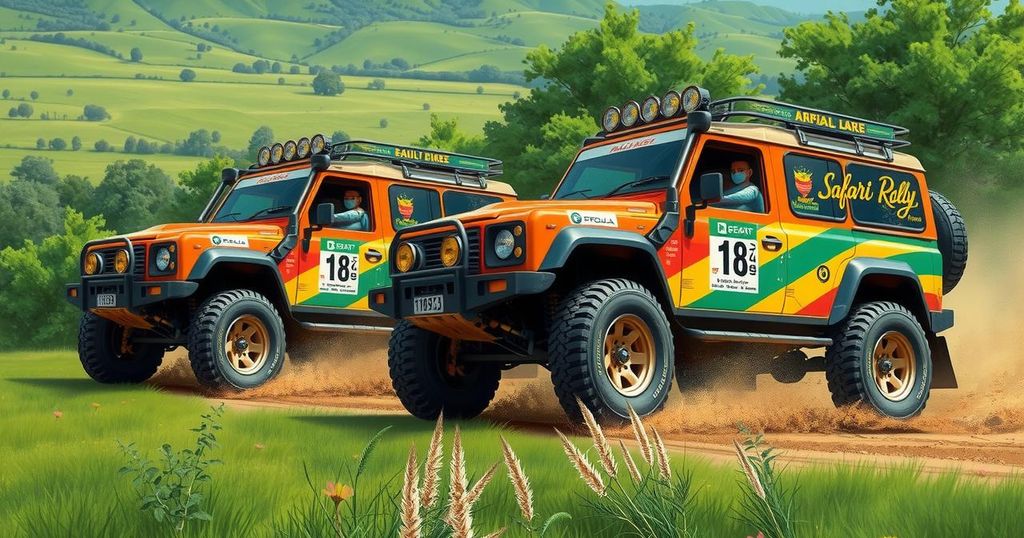The Safari Rally Kenya stands out on the WRC calendar due to notable car modifications necessary to navigate the country’s tough terrain. Essential changes include snorkels to prevent engine flooding, taller suspensions for better stability, and adjustments for high altitude. The event features 39 drivers and expects a large audience both in-person and worldwide, showcasing leading car brands like Toyota and Hyundai.
The Safari Rally Kenya, taking place in Naivasha this weekend, is unique on the World Rally Championship (WRC) calendar due to significant modifications made to the competing cars. These adjustments are essential for enduring Kenya’s challenging racing terrain, recognized as one of the most demanding rallies globally. The event will commence today, March 20, featuring an official flag-off by President William Ruto, followed by the Super Special Stage in Kasarani before the crews move to Naivasha in Nakuru County.
Participants will navigate 384 competitive kilometers, the longest for the year, which comprise rough roads, deep water crossings, and high-speed segments. To meet these extreme conditions, several key modifications are implemented on the vehicles:
1. Snorkel: A raised air intake system, known as a snorkel, is essential for the cars. This feature allows the engine to function effectively during deep water crossings by preventing water ingestion, a common issue due to the unpredictable weather.
2. Taller, Tougher Suspension: The Safari Rally necessitates a higher ride height for vehicles. As a result, the suspension has been elevated to manage the relentless bumps, sharp ruts, and large rocks that threaten to derail a rally. A balance between ground clearance and stability is crucial to maintain speed in rapid sections of the course.
3. Fine-Tuned for High Altitude: Naivasha is located at a high altitude, resulting in thinner air that reduces engine power. Teams modify engine maps to compensate for this, ensuring optimal performance as drivers traverse the stunning African landscapes.
This year’s event includes 39 competitors from various nations, attracting an anticipated audience of over 85 million global viewers, along with an estimated 100,000 fans present in Naivasha.
Among the vehicle brands participating, Toyota, Hyundai, and Ford dominate the race. Hyundai motorsport aims to disrupt Toyota’s successful streak since 2021, with prominent drivers such as Thierry Neuville and Ott Tänak leading their i20 N Rally1 efforts. M-Sport Ford presents a trio of Puma Rally1 vehicles piloted by Grégoire Munster, Josh McErlean, and Jourdan Serderidis. In the WRC2 category, reigning champion Oliver Solberg will compete in a Toyota GR Yaris Rally2, joined by newcomers such as Kajetan Kajetanowicz.
The Safari Rally Kenya is a distinct event on the WRC calendar, characterized by significant adaptations made to the cars to endure the challenging conditions of the Kenyan terrain. With essential enhancements such as snorkels and elevated suspensions, these vehicles are well-equipped to tackle the extensive and demanding rally course. The event not only promises thrilling competition among top automotive brands but also draws a vast audience, highlighting the global appeal of motorsport in unique conditions.
Original Source: www.the-star.co.ke




